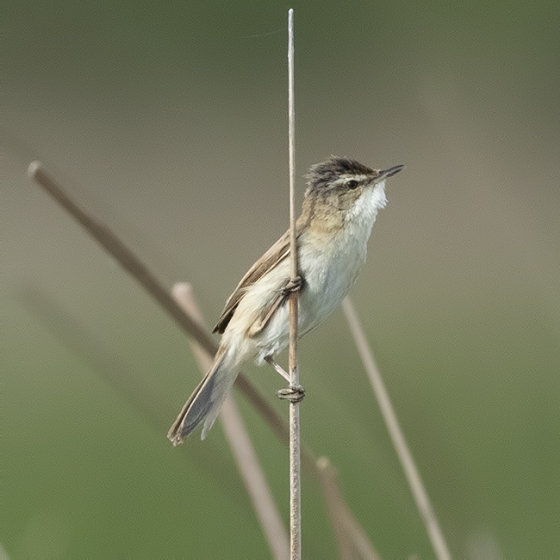Paddyfield Warbler

Introduction
Looking much like a Reed Warbler but with a stronger eye-stripe, Paddyfield Warbler is rare visitor to Britain & Ireland.
Records tend to fall during the autumn months, and come largely from the Northern Isles. The smaller number of spring records tend to come from the east coast.
Paddyfield Warbler breeds from Romania east to Mongolia, and winters from Iran east to China.

Key Stats
Status and Trends
Conservation Status
Population Size
Population Change
Population trends of this scarce species are not routinely monitored.
Distribution
This species is a rare vagrant and was recorded during Bird Atlas 2007–11 as shown on the map.
or view it on Bird Atlas Mapstore.
European Distribution Map
Distribution Change
This vagrant is too rarely reported to map distribution change.
Seasonality
This species has been too rarely reported to BirdTrack during 2011–22 to properly assess seasonality.
Movement
Britain & Ireland movement
Foreign locations of birds ringed or recovered in Britain & Ireland
Dots show the foreign destinations of birds ringed in Britain & Ireland, and the origins of birds ringed overseas that were subsequently recaptured, resighted or found dead in Britain & Ireland. Dot colours indicate the time of year that the species was present at the location.
- Winter (Nov-Feb)
- Spring (Mar-Apr)
- Summer (May-Jul)
- Autumn (Aug-Oct)

Biology
Survival and Longevity
Survival is shown as the proportion of birds surviving from one year to the next and is derived from bird ringing data. It can also be used to estimate how long birds typically live.
View number ringed each year in the Online Ringing Report.
Classification, names and codes
Classification and Codes
- Order: Passeriformes
- Family: Acrocephalidae
- Scientific name: Acrocephalus agricola
- Authority: Jerdon, 1845
- BTO 2-letter code: PY
- BTO 5-letter code: PADWA
- Euring code number: 12470
Alternate species names
- Catalan: boscarla dels arrossars
- Czech: rákosník plavý
- Danish: Lille Rørsanger
- Dutch: Veldrietzanger
- Estonian: padu-roolind
- Finnish: kenttäkerttunen
- French: Rousserolle isabelle
- German: Feldrohrsänger
- Hungarian: rozsdás nádiposzáta
- Icelandic: Dvalsöngvari
- Irish: Ceolaire Gort Ríse
- Italian: Cannaiola di Jerdon
- Latvian: palsais kaukis
- Lithuanian: indine nendrinuke
- Norwegian: Åkersanger
- Polish: trzcinniczek kaspijski
- Portuguese: felosa-agrícola
- Slovak: trsteniarik rolný
- Slovenian: plevelna trstnica
- Spanish: Carricero agrícola
- Swedish: fältsångare
- Welsh: Telor Padi

